Sirius has laid out a clear and concise representation of what we need, and we intrinsically understand why Demand Units are a great idea in any number of demand generation applications. What we often lack is that defined next step: how to integrate the latest thinking into our own Marketing strategy. We believe it all starts with a plan.
Planning is at the heart of your Marketing efforts, and is key to turning your strategy into tangible, measurable actions. Essential to your Plan is the understanding of your audience and how you will message your value proposition to your target audience. To integrate Sirius’s Demand Units as the target audience(s) into your Marketing Plan, you must first ask a few key questions:
How does my value proposition map to the needs/wants of my target audience? Essential to understanding the answer is understanding your Demand Unit composition. The Demand unit composition will represent one axis of your Demand Map, so let’s look at a systematic way you can map your value proposition to specific member/buyers of the Demand Unit. This chart may be used to map virtually any Product or Service from a Program Strategy into a Demand Unit.
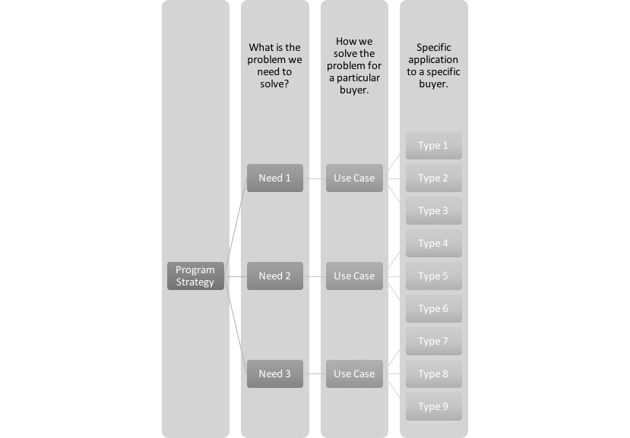
Once the Demand Unit composition is defined, your Value Proposition specific to each Need/Use Case represents the other axis in the grid. Very simply, each cell in the grid represents a solution message unique to that Buyer Type. Not all Buyer Types will have applications or use cases for all solutions in your Program portfolio, so be careful not to map those solutions to irrelevant Buyer Types.
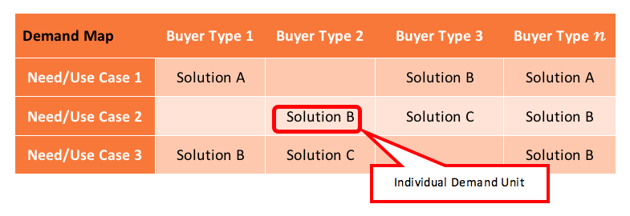
Equally important to the definition of each Demand Unit is planning the goals around each solution. At the core of building your Marketing activities to communicate the value proposition to your Demand Unit audiences is the ability to understand the strategic organization of those activities to insure consistent coverage of the messaging throughout the buyer’s journey. To understand the performance of those activities, you must also have established goals against which you can compare the actual performance. A sophisticated Marketing Planning application, like Hive9 Plan, provides Marketers with detailed insights into actual performance as compared to expected results.
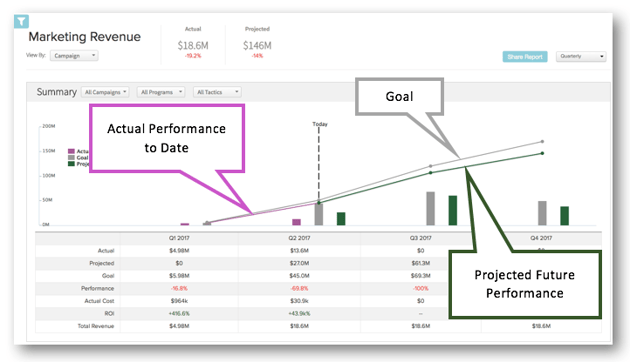
In addition, detailed performance views – even down to the specific tactic level – can illustrate which Marketing activities are performing better than others, so Marketers can make on-the-fly adjustments towards activities that offer the best performance!
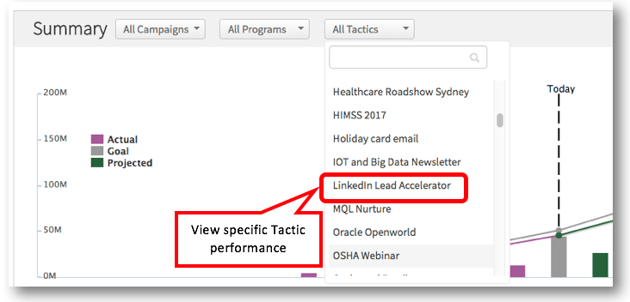
The next key question often presents an unnecessary roadblock to implementation of a messaging strategy mapped to the Demand Units. What is the best communication channel for my specific Buyer Type? Frankly, there is no “best practice” to answer this question for your specific solution and audience. Further, that can be complicated by a phenomenon called Channel Elasticity, in which communication consumption preferences vary with the combination of Buyer Type, Sales Stage and Firmographic Factors.
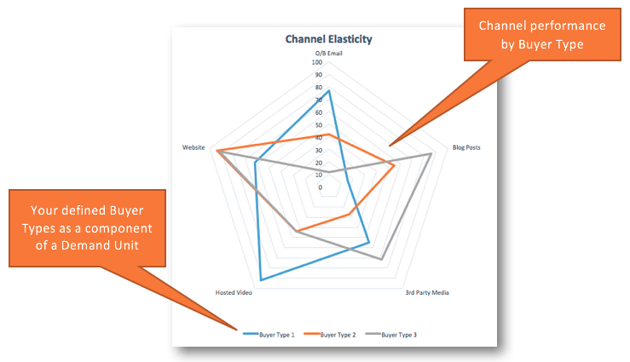
But what if you don’t have a good picture of the consumption preferences of your target Buyer Type, or if your organization is new to ABM or Demand Units? This is often the case, and should not stand in the way of deploying this to your Marketing Strategy. Again, the answer lies in planning. Planning sets expectations, but advanced planning provides the opportunity to do what all good Marketers do: test, test and test some more.
Using a sophisticated Marketing Planning tool like Hive9, you are able to not only create and deploy a Marketing plan, but you can deploy that plan with the expectation that your individual Tactics will be measured and optimized. Let’s look at an example of how you might deploy a Plan with built-in test-and-optimize functionality. In the example below, we have deployed a two-channel advertising Program on LinkedIn for Q1, each Tactic with a specific goal for Inquiries, MQLs and Closed/Won stages. As we can see in the results, the Text Ads outperformed the Sponsored Updates significantly in Closed/Won, but trailed the Sponsored Updates in generating Inquiries. Based on these results, which of the two Tactics will you pursue in Q2?
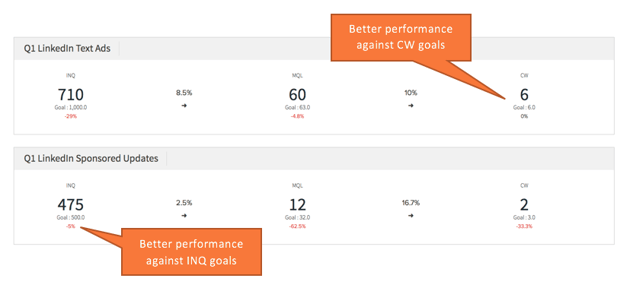
In addition, Hive9 allows you to look at your Marketing performance overall by classes of Tactics you employ. It is critical to look at both Tactical and Revenue performance to determine which tactics are driving the critical contributions to sales revenue!

Further, you can look at specific Campaigns, regardless of Tactic Type to understand what is driving Marketing-influenced responses and revenue!

If you are noticing a trend here, I want to confirm your insight. Both planning and measurement are critical to being able to understand how well your Programs and Tactics are performing against expectations to the Demand Units, as defined by your organization. The only way to truly understand if your tactics are working or not with your defined Demand Units is to Launch and Learn! Building your plans in a structured, measurable way will provide the necessary insights to analyze your results and optimize your Plan based on that analysis!





